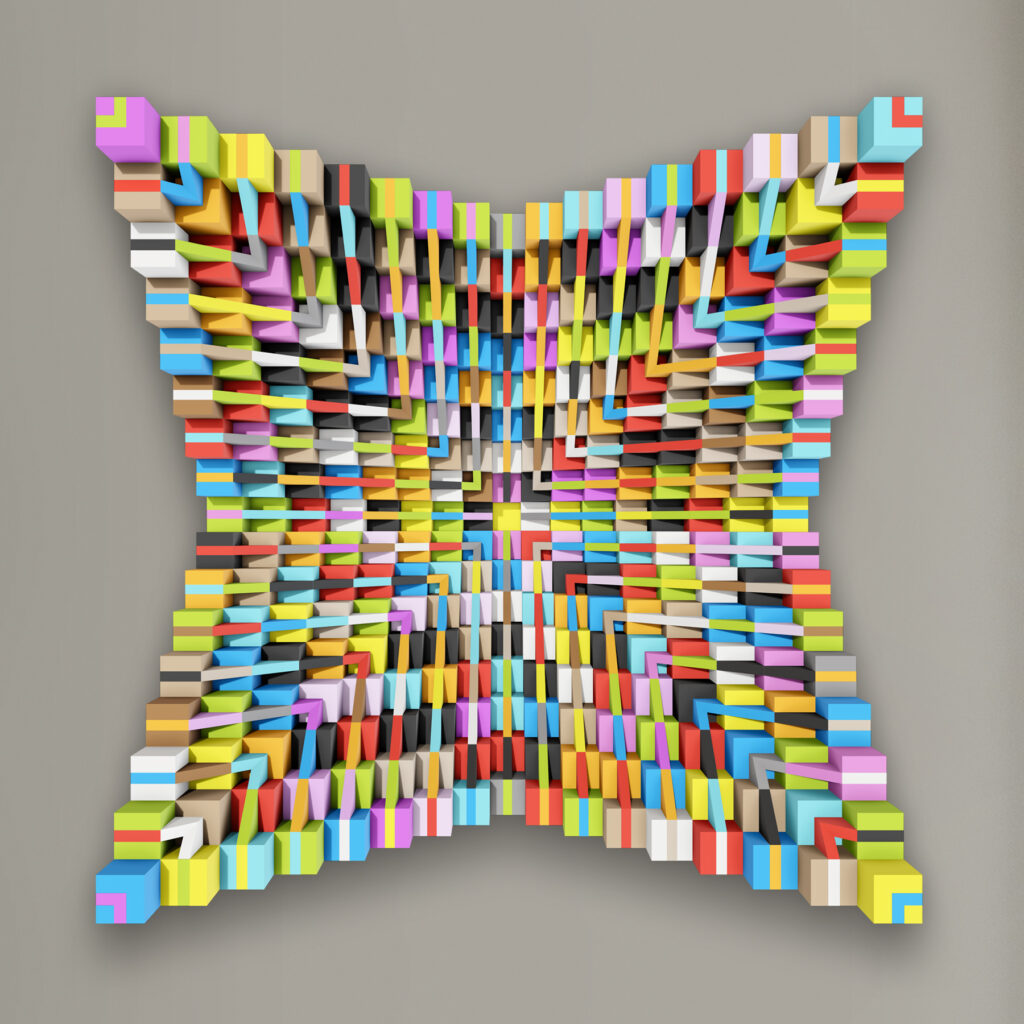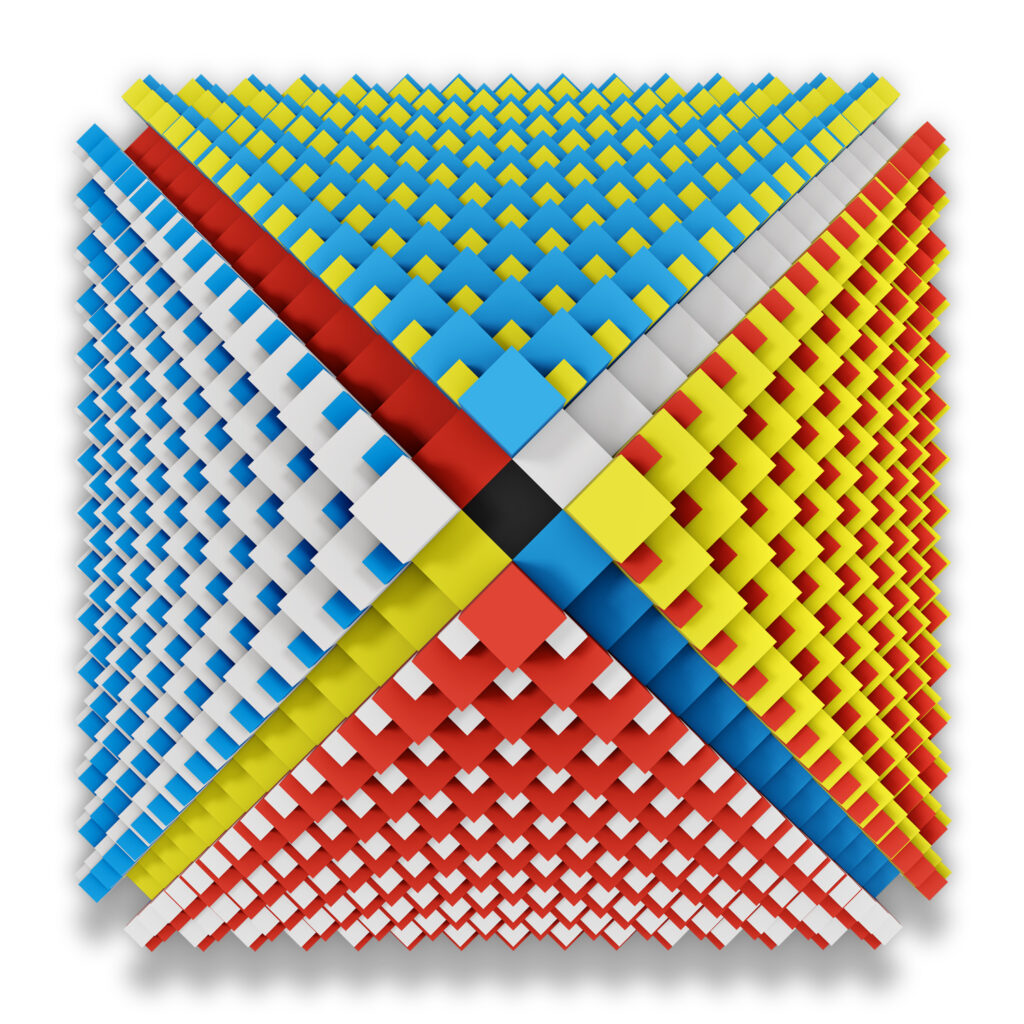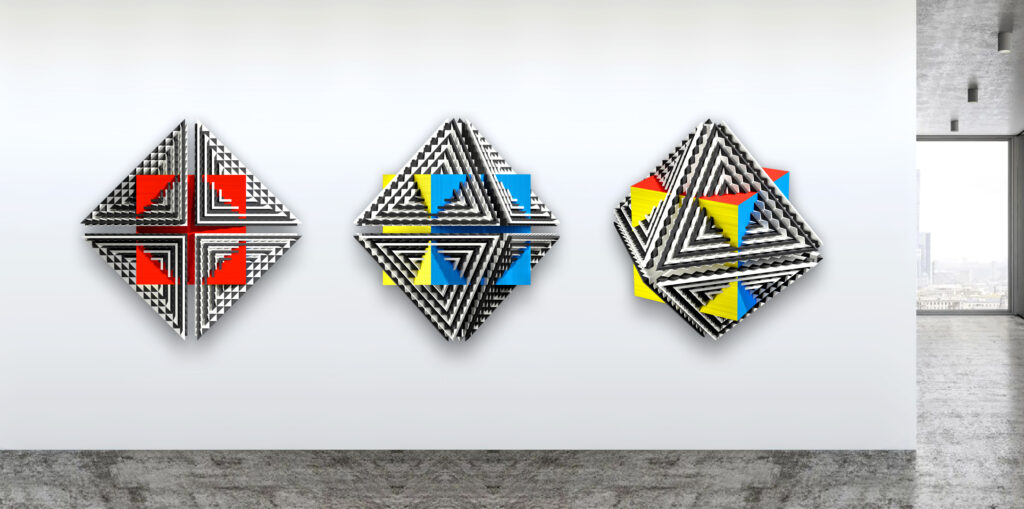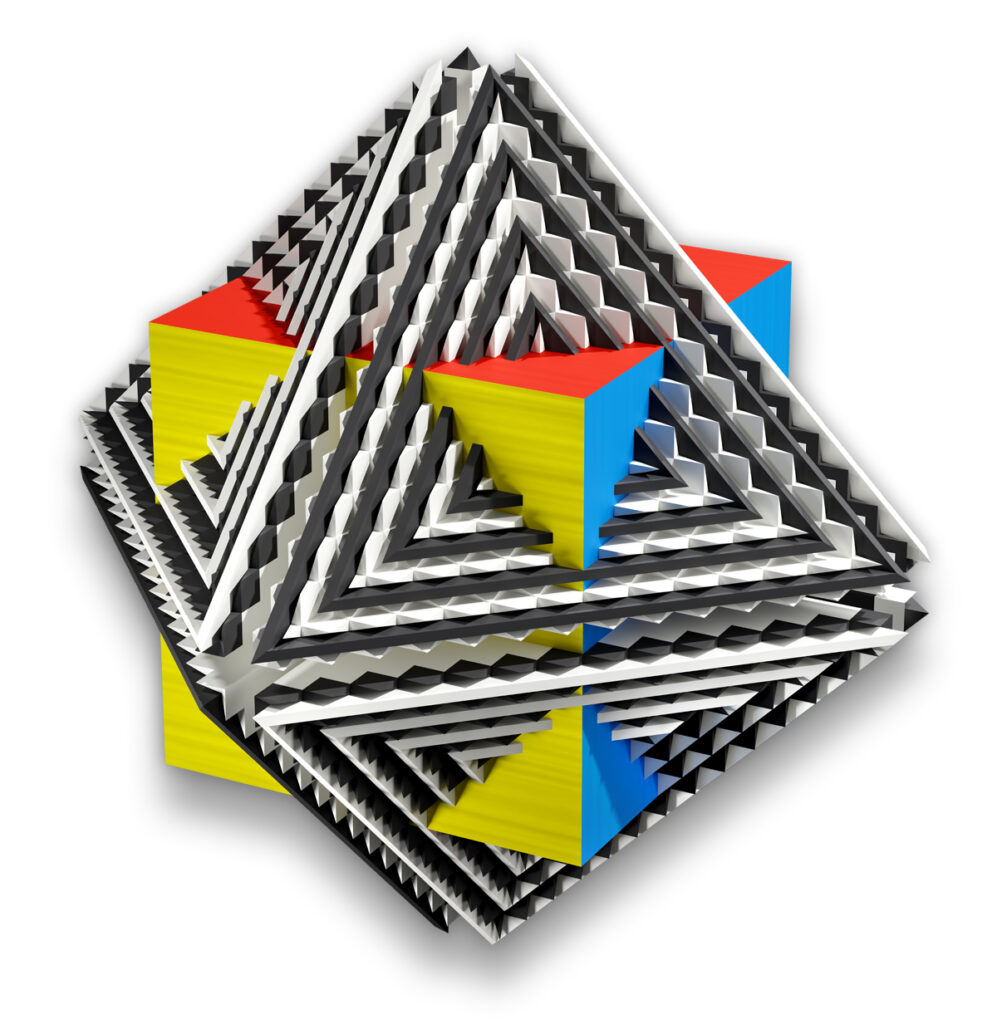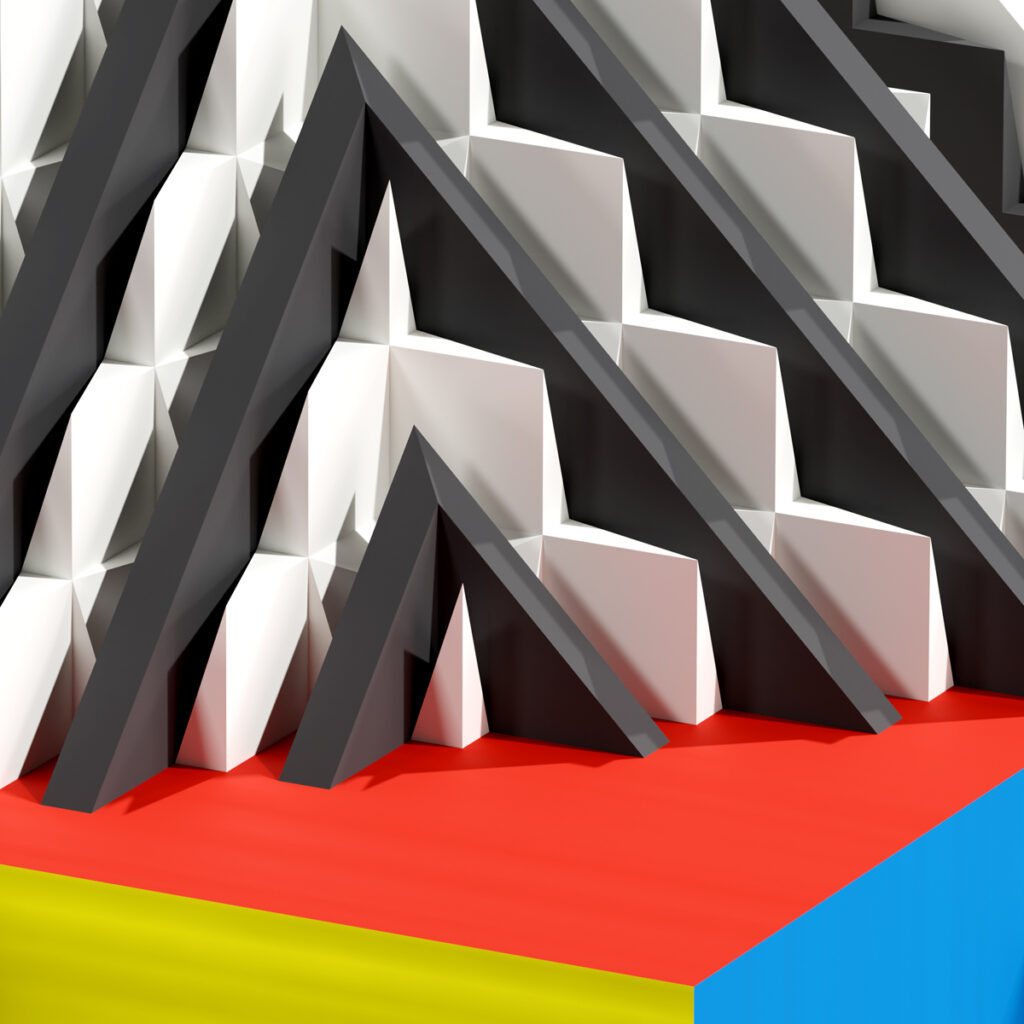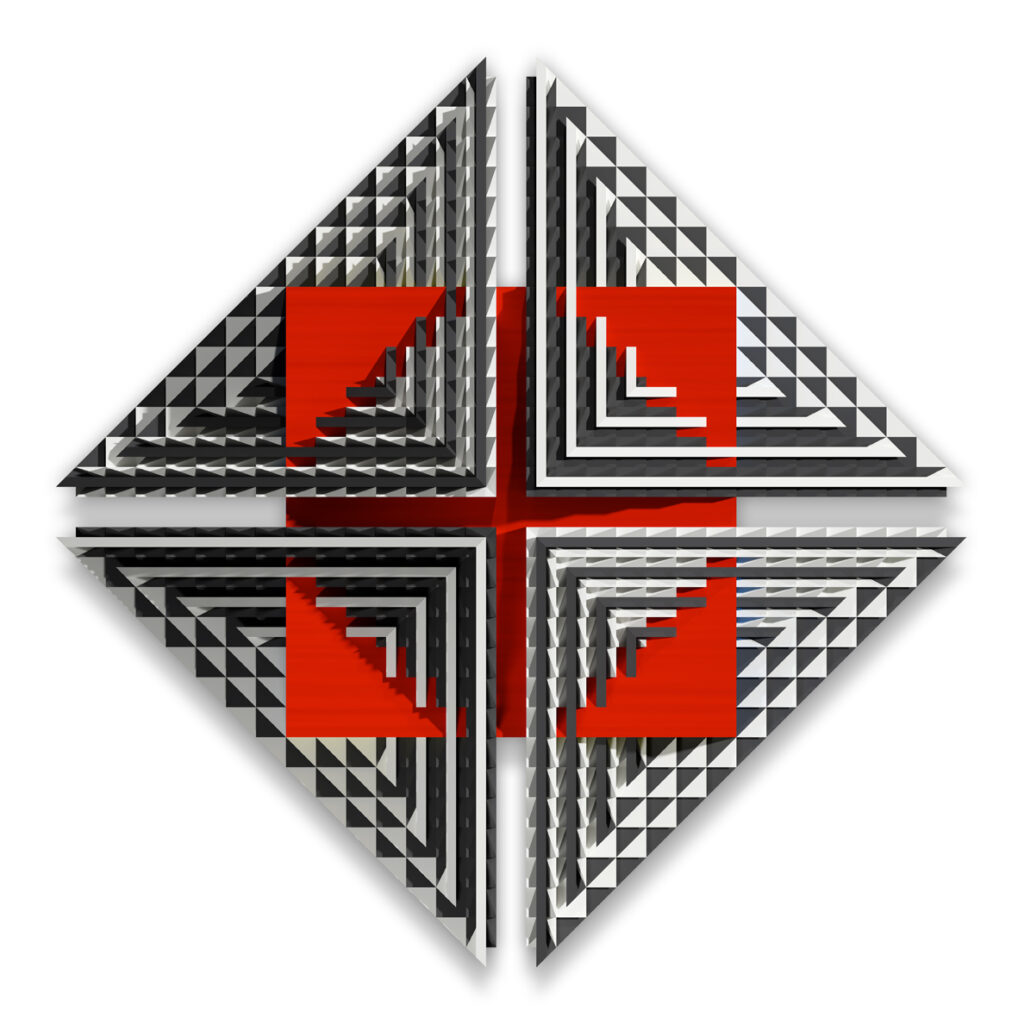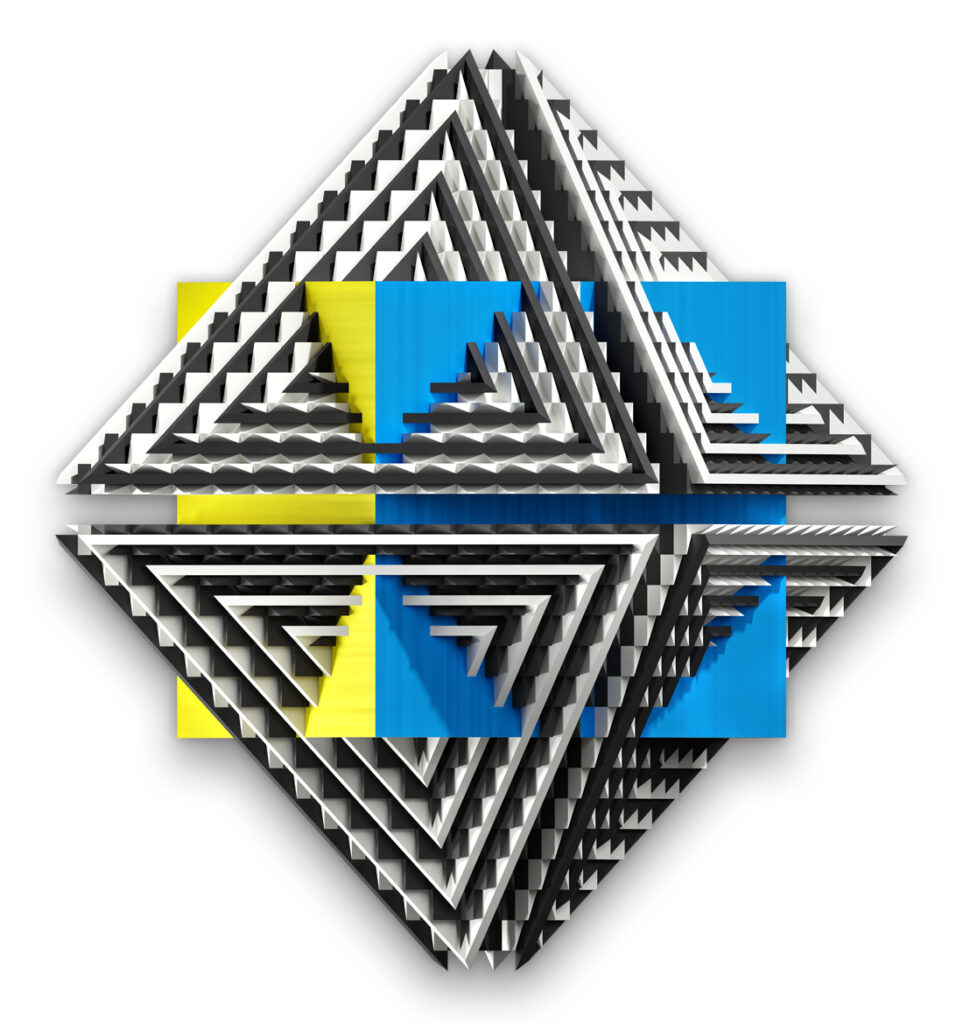Scroll down to read about SPHERISK
click on images to enlarge (except mobile devices)
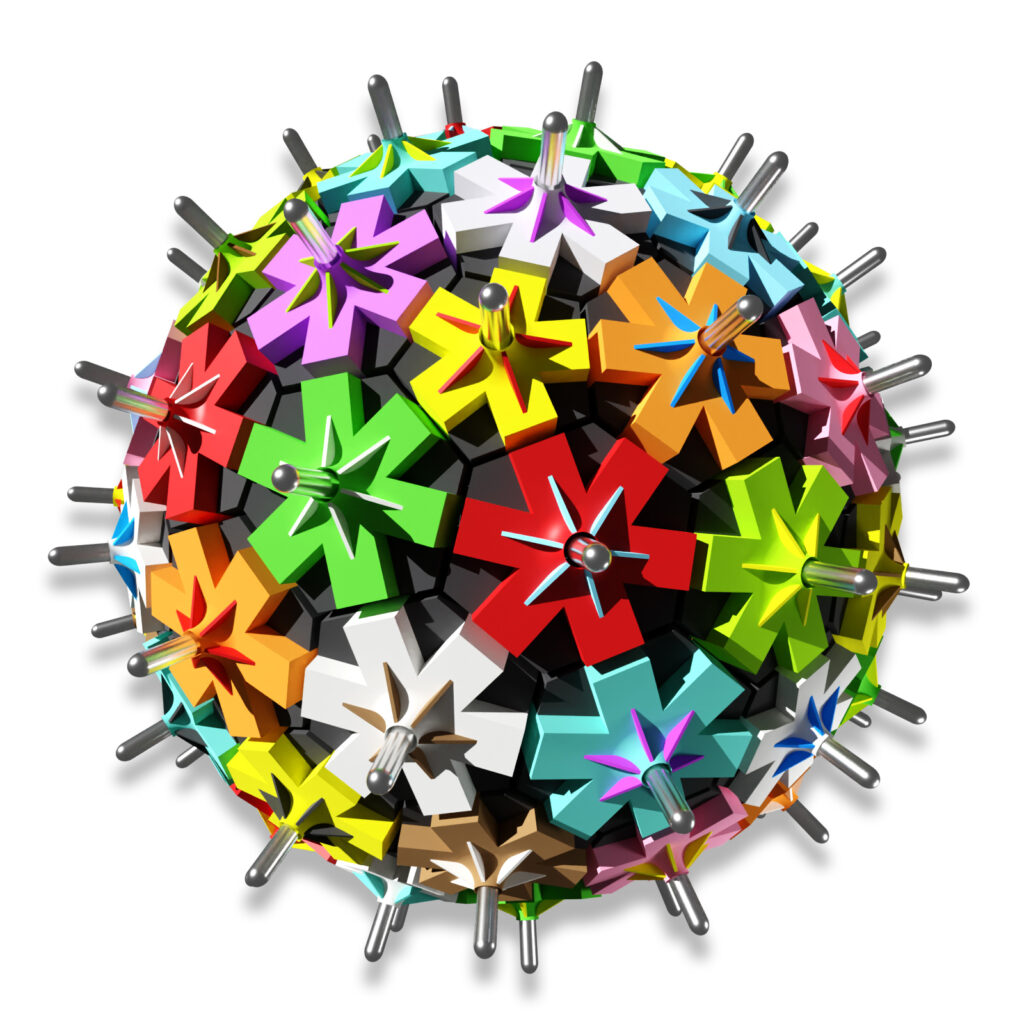
SPHERISK I, 2024
cnc cut out uv inkjet on acrylic mounted to composite aluminum
dimensions variable (47.5″ x 47.5″ overall), edition of 3

Detail of SPHERISK I
I’ve been making artworks with the Asterisk symbol but I thought I’d share my own education on its origins. Please indulge me as the nerd in me can’t resist.
The hashtag is getting all the fame. But before the hashtag became so celebrated with the advent of social media, the asterisk has been used throughout the ages. The iconography of the Asterisk is deeply embedded in the human psyche. Ever since humans began mark making that ice age humans left for us to see in caves, the asterisk is present, thought to represent a symbol for stars. The word asterisk derives from “asteriskos,” a Greek word meaning “little star”. The symbol of the asterisk is ubiquitous today, used for annotation in writing, in computer language and mathematics. And let’s not forget its use in today’s language to mask expletives. It’s also been in front of our eyes since the advent by Bell Labs in 1963 of the push button touch tone phone where they put in the pound sign (also known as the number sign and hash sign) on the bottom right and the asterisk on the bottom left. These symbols had no initial use on the phone but thinking ahead they added these symbols for future yet to be invented purposes. So, in these artworks with the asterisk, I’m not solely making formal geometric constructs but also speaking to the power of symbols that carry from generation to generation without much thought that these things helped shape our humanity.
I began creating 2d geometric artworks with the asterisk because I find it geometrically interesting, with its 6 spokes rotated 60 degrees apart and how it fits into a hexagon. So, now working in 3d, I asked myself, what could I do with it 3 dimensionally. I thought about the hexagon and how soccer balls are often stitched together with hexagons and some pentagons. Soccer balls are actually polyhedrons where the surfaces of the polygons are curved to make it spherical. It’s mathematically impossible to make a Polyhedron solely with hexagons without some pentagons. If you look closely at you’ll notice at the top, a yellow 5 spoked asterisk with red fins set into a pentagon. SPHERISK, although not actually a sphere, as it’s made up of flat segmented polygons, has the effect of being a sphere. The more polygons, the rounder it feels. SPHERISK has 110 hexagons and 12 pentagons with each polygon embedded with an asterisk sculpted with centers surrounded by fins that curve up and sprout metallic cylinders.

